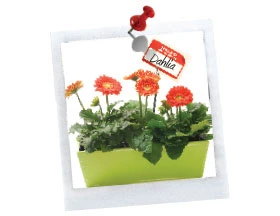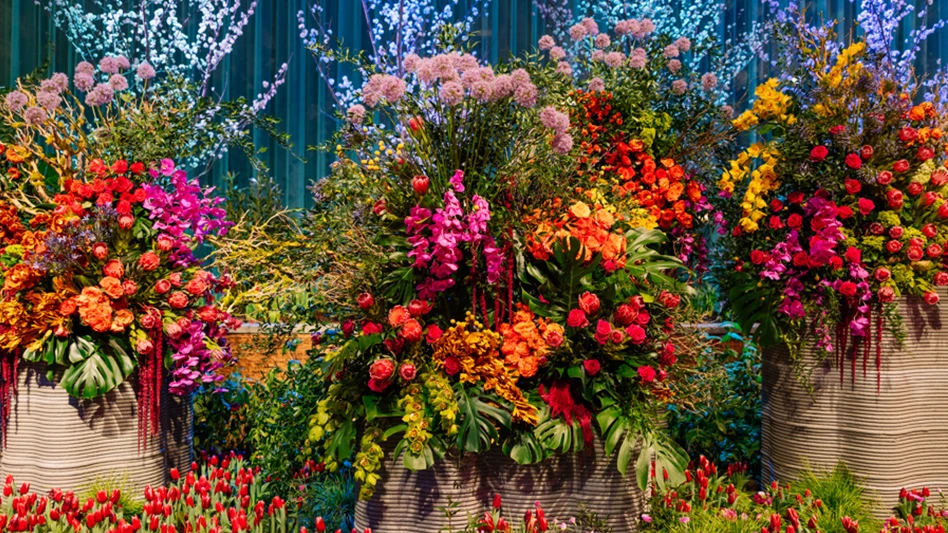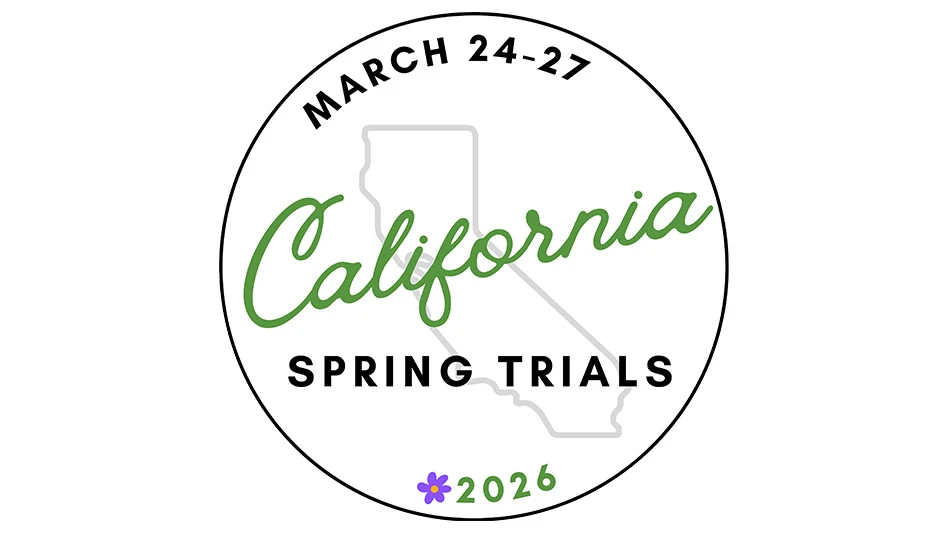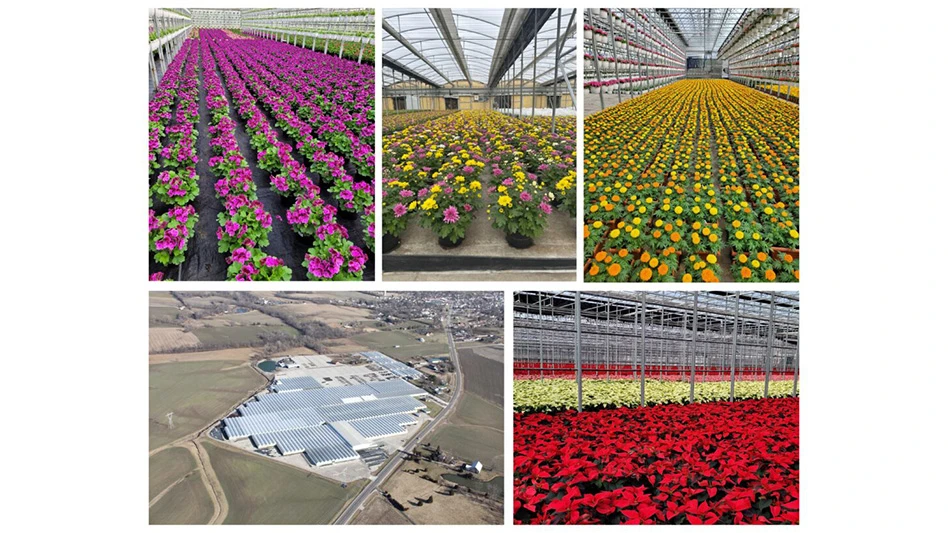
 Tag and Pin: Thinkstockphotos.com; Computer, Polaroid: IStockphoto.com |
Hopefully you picked up the March issue of Garden Center and read Michelle Simakis’ article on “The power of Pinterest” on page 36. Pinterest is all about sharing inspiration, and I’m sure Michelle inspired you to jump in. The goal of social media these days is to engage your family of customers and Pinterest certainly does that.
When I survey folks at talks I’ve given, they’ll often admit to spending three or four hours at a time on Pinterest surfing for images of the perfect cake, dress and garden project. I’m guilty of this myself. In business, you’re lucky if visitors spend two full minutes on your company website. What an opportunity!
But as Michelle states in her article, Pinterest isn’t just about advertising your company; it’s about sharing other’s work that can provide inspiration. The goal is for all that inspiration to lead to direct sales at your garden center.
Green industry colleagues weigh in
Nikki Rosen, who was interviewed in Michelle’s article, was my marketing manager at North Haven Gardens for seven years. We jumped on the Pinterest bandwagon early and used it to spot and share trends. But with all that “sharing” can also come some dangerous pitfalls. The internet is full of truths, half-truths, and a lot of garbage. All of it gets shared on Pinterest. If you’re a seasoned horticulturist or garden center employee, you might have an idea of where I’m headed with this train of thought.
|
Stolen identities Another concern that has been voiced to me, especially from landscape designers, is that they are afraid other Pinterest users will re-pin photos as their own work. Just as photos can be repinned with the wrong plant name, so can images be misrepresented as another’s work. While this is possible, I’d say as designers, you’ll gain much more by sharing your work publicly than you’ll lose from the occasional photo swipe. Pinterest is a great tool to inspire your customers to use your products and services in creative ways; but the tool is only as good as its human user. When you see errors, make a comment to set the pinner straight. Only pin what is doable and realistic for your customers. Just as with any other media platform, use Pinterest with honesty and authenticity and you’ll be setting your customers up for success. |
During one of our recent confabs, a colleague and I discussed using Pinterest in the green industry. We both immediately began lamenting over the pain it had caused us in one form or another with our customers. Cody Hoya, owner of Terrain Horticultural Design, provides specialty garden, container and floral design services in Dallas, Texas.
“I like to browse Pinterest now and then as a casual source of inspiration,” says Cody. “There are some great projects and ideas to be found, particularly in the gardening and DIY areas, as long as users recognize that this is an open source directly culled from the internet. As such, users should be aware that not all things depicted are what they seem.” Cody is always very polite.
What he’s saying in a very nice way is that there are a lot of fakes on Pinterest. Those of us in the industry are typically the ones left to disappoint customers who’ve been “over-inspired” by what they’ve seen online.
Many Pinterest posts equate to a game of “telephone.” They might start out with good intentions, only to be reposted, re-labeled or re-identified as something different along the way. By the time the photo pops up on your customer’s screen, or even worse your business’ Pinterest page, the damage is done.
After exchanging several Pinterest issues we’d personally experienced with customers, we narrowed them down to our top three Pinterest offenses. As garden center businesses that either are, or will, operate a Pinterest page, you need to make sure you don’t fall victim to generating or sharing misinformation. Our goal is the gardening success of our customers, thus we have a responsibility to manage their expectations along their gardening journey.
1. Fantastical fake color
Enhanced flower color isn’t exactly a new issue for gardeners. Mail order catalogs have been touching up their photos as long as they’ve been printed in color. I’ll admit, Photoshop is a great program. I’ve relied on it for years for any number of photographic or design needs. It’s also fun to play with in terms of photo enhancement.
However, Photoshopping your plant photos to change colors in a way that isn’t realistic is the equivalent of air brushing the cellulite off your cover model’s photo. It’s just cruel. Most of our customers aren’t plant experts and for them seeing is believing.
You may have seen photos posted recently on Pinterest of rose flowers with petals in color of the rainbow, or perhaps Irises with turquoise blooms. Some of these images are merely art projects produced by graphic artists that post them to showcase a graphic enhancement technique.
But as they get re-pinned by each new visitor, that original message can be lost and plants are represented as real options for gardeners.
So be careful what you pin to your Pinterest boards; make sure you pin realistic plant photos or re-write the description letting viewers know the color is not found in nature.
2. Too good to be true garden combos
It really is heartbreaking when you have to tell a customer that the garden in the photo they brought you just isn’t possible. You know the photos I’m talking about: The ones where blooming perennials, bulbs and trees have all been cut and pasted together to create the perfect dream garden? If only those astilbe, lupines, tulips, delphinium, forsythia, azaleas and spirea all bloomed in perfect tandem like in the photo. Those of us in the industry can usually spot these “too good to be true” garden ensembles immediately. But again, many customers may believe what they see and want to recreate the scene.
 Cody laments that “While these are typically fodder for harmless fantasy, I know for a fact that blatant misinformation has been the source of heartache for users who invested significant time and money in materials for imaginary results or blatantly misrepresented products. These fake “easy combination” garden photos are common in low-end plant catalogs, but they seem to be popping up on Pinterest more and more often. Only pin photos of realistic plant combinations for your customers so that you can inspire them to plant what actually works in your climate.
Cody laments that “While these are typically fodder for harmless fantasy, I know for a fact that blatant misinformation has been the source of heartache for users who invested significant time and money in materials for imaginary results or blatantly misrepresented products. These fake “easy combination” garden photos are common in low-end plant catalogs, but they seem to be popping up on Pinterest more and more often. Only pin photos of realistic plant combinations for your customers so that you can inspire them to plant what actually works in your climate.
3. A rose by any other name… still isn’t a peony
The most common and frustrating Pinterest pitfall seems to be mislabeled or misidentified flowers. Peonies, roses, camellias and ranunculus seem to be a challenge for pinners. Cody knows this first hand, as he’s discovered some of his own work repinned with incorrect names.
“It can be particularly frustrating for brides planning wedding flowers while they are chasing false leads: pictured bouquets are frequently silk (not fresh) flowers, their color has been artificially enhanced, or they are misidentified altogether—or all of the above”, says Cody.
Florists and designers may directly pin original photos of their work, only to have them repinned with new descriptions that aren’t correct. Remember that game of telephone? Here, a bouquet of “Early Summer Garden Roses” Cody put together for a bride was quickly repinned from his blog as “Peonies.”
I experienced this directly when my own sister was scouring Pinterest for flower ideas for her own wedding. Dahlias, chrysanthemums and daisies also seem to get jumbled up once repinned; luckily she had a horticulturist on hand to properly identify the flowers she actually wanted to purchase.
When the wrong flowers show up on the wedding day, it’s going to lead to a Bridezilla moment. When you find photos mislabeled, comment with the correct plant name, and always make sure to review photos your customers are using to make specific plant requests.

Explore the June 2013 Issue
Check out more from this issue and find your next story to read.
Latest from Garden Center
- Is your IGC in one of the United States’ best cities for naked gardening?
- De Vroomen Garden Products unveils Miffy Gardening Collection for kids
- Pennsylvania Horticultural Society announces 2025 Gold Medal Plant winners
- GIE Media Horticulture Group wins five regional 2025 Azbee Awards of Excellence
- Terra Nova Nurseries introduces rust-free and disease-resistant heucherella
- John T. Nickel, founder of Greenleaf Nursery Co., passes away at 89
- Garden Media Group announces sixth annual Women in Horticulture Week
- Star Roses and Plants announces National Knock Out Rose Day







